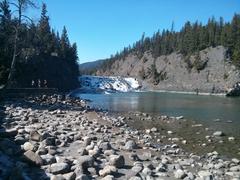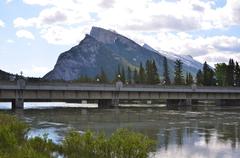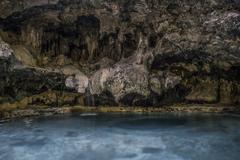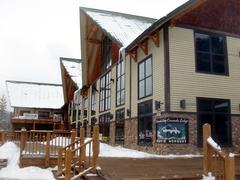Comprehensive Guide to Visiting Banff, Alberta, Canada
Date: 13/08/2024
A Bold Beginning
Imagine stepping into a world where nature’s splendor knows no bounds, where turquoise lakes gleam like precious gems nestled among towering peaks, and where the air is so crisp and pure it feels like a rejuvenating elixir. Welcome to Banff, Alberta, Canada—a place where every corner tells a captivating story, and every vista is a breathtaking experience. Banff isn’t just a destination; it’s a journey through time and nature’s wonders. From its inception as a hidden treasure of natural hot springs discovered by Canadian Pacific Railway workers in 1883 to its establishment as Canada’s first national park in 1885, Banff has evolved into a symbol of natural beauty, cultural richness, and historical significance (Parks Canada).
Banff is a kaleidoscope of experiences. Whether you’re drawn by the allure of its UNESCO World Heritage Site status, the call of its majestic Rocky Mountain landscapes, or the vibrant culture that pulses through its community, Banff offers something for everyone. You can hike to the serene Lake Agnes Tea House, ski at world-class resorts like Sunshine Village, or relax in the mineral-rich waters of the Banff Upper Hot Springs. It’s also a hub of creativity and learning, home to the Banff Centre for Arts and Creativity and a living laboratory for scientists and conservationists alike (UNESCO, Banff Centre).
So, pack your bags and get ready to explore Banff like a true insider. This guide will take you on a journey through the town’s rich history, its significant landmarks, and the local secrets that make Banff a unique and unforgettable destination. Ready to dive in? Let’s go!
What’s Inside
- History of Banff
- Imagine the Beginning
- From Wilderness to Wonder: Early Settlement and Discovery
- Birth of a National Treasure: Establishment of Banff National Park
- All Aboard the Tourist Train: Development as a Tourist Destination
- Becoming Self-Governing: Incorporation and Governance
- Global Recognition: Historical Significance and UNESCO World Heritage Site
- Indigenous Voices: Indigenous Peoples and Early Inhabitants
- Dark Times: Internment Camps During World War I
- Balancing Act: Conservation Efforts and Environmental Challenges
- Modern-Day Banff: A Year-Round Wonderland
- Hidden Treasures: Cultural and Historical Sites
- Celebrating Banff: Festivals and Events
- Insider Tips: Visitor Tips
- Conclusion: An Invitation to Explore
- Significance of Banff
- Discover Banff: A Place of Magic and Mystery
- Historical Significance
- Natural Significance
- Cultural Significance
- Economic Significance
- Recreational Significance
- Educational Significance
- Health and Wellness Significance
- Environmental Significance
- Architectural Significance
- Scientific Significance
- Community Significance
- Seasonal Highlights
- Local Lingo Lessons
- Myth Busting and Surprises
- Storytelling Elements
- FAQ
- Call to Action
- Visitor Tips
- Welcome to Banff: Nature’s Unscripted Symphony
- Best Time to Visit
- Accommodation
- Transportation
- Essential Activities
- Hiking and Nature Walks
- Skiing and Snowboarding
- Scenic Drives
- Cultural Experiences
- Museums and Historical Sites
- Festivals
- Dining and Nightlife
- Call to Action
History of Banff
Imagine the Beginning
Imagine stumbling upon a hidden treasure of natural hot springs in the heart of the rugged Canadian Rockies—this is how Banff’s story begins. Nestled in Alberta, Banff is not just a pretty face; it’s got stories that would make your grandma’s tales look like bedtime lullabies.
From Wilderness to Wonder: Early Settlement and Discovery
Banff, Alberta, located in the heart of the Canadian Rockies, has a rich history that dates back to the late 19th century. The area was first settled in the 1880s following the construction of the transcontinental railway through the Bow Valley. In 1883, three Canadian Pacific Railway workers discovered a series of natural hot springs on the side of Sulphur Mountain, which would become a significant draw for the area (Wikipedia).
Birth of a National Treasure: Establishment of Banff National Park
In response to disputes over the ownership and development of the hot springs, the Canadian government established a federal reserve of 26 square kilometers around the Cave and Basin hot springs in 1885. This reserve was later expanded to 673 square kilometers in 1887 and named “Rocky Mountain Park,” marking the beginning of Canada’s National Park system (The Canadian Encyclopedia).
All Aboard the Tourist Train: Development as a Tourist Destination
The Canadian Pacific Railway played a crucial role in Banff’s development as a tourist destination. The railway company built a series of grand hotels along the rail line, including the iconic Banff Springs Hotel, which opened on June 1, 1888. This hotel was advertised as an international tourist resort, attracting visitors from around the world (Wikipedia).
Becoming Self-Governing: Incorporation and Governance
Banff was incorporated as a town in 1990, becoming the first municipality within a Canadian national park. The town’s development has always been influenced by the federal government, tourism, and the railway. Today, Banff is a self-governing municipality within the province of Alberta, with a population of 7,584 as of the 2011 census (The Canadian Encyclopedia).
Global Recognition: Historical Significance and UNESCO World Heritage Site
In 1985, Banff National Park was declared a UNESCO World Heritage Site as part of the Canadian Rocky Mountain Parks. This designation recognizes the park’s outstanding natural beauty and its significance in the conservation of the region’s unique ecosystems (Wikipedia).
Indigenous Voices: Indigenous Peoples and Early Inhabitants
The Banff region has been inhabited for nearly 11,000 years. Indigenous peoples, including the Stoney Nakoda, Ktunaxa, and Blackfoot, have long considered the area sacred. The establishment of the national park led to the displacement of these communities, a history that is increasingly acknowledged and respected in contemporary park management (Britannica).
Dark Times: Internment Camps During World War I
During World War I, an internment camp was established at Banff and Castle Mountain in Dominion Park from July 1915 to July 1917. The camp primarily imprisoned Ukrainian immigrants, who were used as forced labor to build the infrastructure of the national park (Wikipedia).
Balancing Act: Conservation Efforts and Environmental Challenges
Throughout its history, Banff National Park has faced tensions between conservation and land exploitation interests. In the mid-1990s, Parks Canada initiated a two-year study to address the impact of tourism and development on the park’s ecosystem. This study resulted in management recommendations and new policies aimed at preserving the park’s ecological integrity (Wikipedia).
Modern-Day Banff: A Year-Round Wonderland
Today, Banff is one of Canada’s most popular tourist destinations, attracting over 3 million visitors annually. The town is known for its stunning mountainous surroundings, hot springs, and outdoor recreational activities such as hiking, biking, and skiing. Nearby ski resorts include Sunshine Village, Ski Norquay, and Lake Louise Ski Resort (Wikipedia).
Hidden Treasures: Cultural and Historical Sites
Banff is home to several national historic sites, including the Banff Museum Park, Cave and Basin, Abbot Pass Refuge Cabin, Howse Pass, Skoki Ski Lodge, and the Sulphur Mountain Cosmic Ray Station. The Banff Springs Hotel, although not administered by Parks Canada, remains a significant historical landmark (The Canadian Encyclopedia).
Celebrating Banff: Festivals and Events
Banff hosts a variety of cultural events throughout the year, including the Banff Summer Arts Festival and the Banff Mountain Film and Book Festival. These events celebrate the town’s rich artistic heritage and its connection to the natural environment (The Canadian Encyclopedia).
Insider Tips: Visitor Tips
For those planning to visit Banff, it is essential to be aware of the park’s regulations and the need to preserve its natural beauty. Visitors are encouraged to purchase a park pass, respect wildlife, and follow designated trails to minimize their impact on the environment. The best time to visit Banff is during the summer months, particularly in August, when the weather is warm, and outdoor activities are in full swing (The Banff Blog).
Conclusion: An Invitation to Explore
Banff’s history is a testament to its enduring appeal as a destination that balances natural beauty with cultural and historical significance. From its early days as a railway town to its current status as a world-renowned tourist destination, Banff continues to captivate visitors with its stunning landscapes and rich heritage. Come explore Banff using Audiala, and let our beautifully crafted, concise yet deep audio guides enhance your journey.
Significance of Banff
Discover Banff: A Place of Magic and Mystery
Welcome to Banff, Alberta, Canada—a place where every corner hides a story, and every vista takes your breath away. Imagine a land where ancient spirits of the Stoney Nakoda, Kainai, Piikani, and Siksika nations whisper through the trees, and where the air is so crisp, it feels like you’re breathing in purity itself. Intrigued? That’s just the beginning!
Historical Significance
Banff’s rich history stretches back thousands of years. Indigenous peoples cherished this land for its resources and spiritual significance. Then, in 1883, a steamy revelation: the Banff Hot Springs, discovered by Canadian Pacific Railway workers, led to the creation of Canada’s first national park in 1885 (Parks Canada).
Natural Significance
Hold onto your hiking boots! Banff is part of the Canadian Rocky Mountain Parks UNESCO World Heritage Site, spreading over 6,641 square kilometers of jaw-dropping landscapes. Think towering Rockies, lush forests, and crystal-clear lakes. Wildlife like grizzly bears and mountain goats make it a living, breathing postcard (UNESCO).
Cultural Significance
Banff isn’t just nature; it’s a cultural hotspot! The Banff Centre for Arts and Creativity draws artists from around the world, making it a global cultural beacon since 1933. Plus, the Whyte Museum offers a treasure trove of stories and artifacts that keep Banff’s rich history alive (Banff Centre, Whyte Museum).
Economic Significance
Tourism is the lifeblood of Banff, pulling in millions of visitors annually. In 2019, over 4 million people visited Banff National Park, injecting vitality into the local and national economy (Statistics Canada).
Recreational Significance
Banff is an adventure playground every season. Winter means skiing at top-notch resorts like Banff Sunshine Village and Lake Louise, while summer offers hiking, biking, and water sports galore. Fancy a scenic ride? Hop on the Banff Legacy Trail and pedal your way to Canmore (SkiBig3, Banff Lake Louise Tourism).
Educational Significance
Banff is a classroom without walls. The Banff Centre offers eco-focused programs, while Parks Canada’s Banff Field Unit dives deep into research and conservation. Educational tours and programs let you geek out on nature (Parks Canada).
Health and Wellness Significance
Need to unwind? Dive into the mineral-rich waters of Banff Upper Hot Springs. With temperatures between 37 and 40 degrees Celsius, it’s like a warm hug from Mother Nature. Plus, the fresh mountain air and stunning scenery are a recipe for relaxation (Banff Upper Hot Springs).
Environmental Significance
Banff is a conservation champion. From alpine meadows to dense forests, the park is a biodiversity hotspot. Efforts like habitat restoration and wildlife corridors ensure that Banff remains a sanctuary for its wild inhabitants (Parks Canada).
Architectural Significance
Banff’s architecture is a delightful mix of old and new. Take the Banff Springs Hotel, a National Historic Site that looks like a castle straight out of a fairy tale. And the town? Picture charming wooden cabins and modern lodges that blend seamlessly with nature (Fairmont Banff Springs).
Scientific Significance
Banff is a magnet for scientists. Its unique geological formations and ecosystems are a playground for researchers. From studying glacial dynamics to mountain ecosystems, Banff is a living laboratory. Plus, the Banff International Research Station for Mathematical Innovation and Discovery (BIRS) hosts workshops that bring global minds together (BIRS).
Community Significance
Banff’s community is a vibrant mosaic of long-time residents, seasonal workers, and visitors from around the globe. Events like the Banff Mountain Film and Book Festival and the Banff Craft Beer Festival create a lively, welcoming atmosphere. The community’s commitment to sustainability is the cherry on top (Banff & Lake Louise Tourism).
Seasonal Highlights
Banff transforms with the seasons. Winter blankets the town in snow, turning it into a wonderland for snow sports. Spring brings wildflower blooms, while summer offers endless sunshine and outdoor activities. Fall paints the landscape in golden hues. Each season offers its own unique charm and activities.
Local Lingo Lessons
Want to sound like a local? Here’s your cheat sheet:
- “Gorp” – Trail mix.
- “Bluebird day” – A sunny, clear day perfect for skiing or hiking.
- “Bear jam” – Traffic caused by people stopping to watch bears.
Myth Busting and Surprises
Think Banff is just for tourists? Think again! The locals know the best hidden spots. For instance, the Cascade Ponds are a serene escape, perfect for a quiet picnic. And did you know? The Banff Springs Hotel is rumored to be haunted.
Storytelling Elements
Picture this: In the early 1900s, a group of mountaineers attempted to climb Mount Assiniboine. They faced treacherous weather and rugged terrain, but their determination led to the first successful ascent, marking a significant moment in Banff’s mountaineering history.
FAQ
Q: What’s the best time to visit Banff?
A: Anytime! Each season has its own magic. Winter for skiing, summer for hiking, and fall for stunning foliage.
Q: Is Banff suitable for families?
A: Absolutely! From easy hiking trails to educational programs, there’s something for everyone.
Q: Do I need a car to explore Banff?
A: Not necessarily. The town is walkable, and there are shuttles and tours available for longer trips.
Call to Action
Ready to explore the magical wonderland of Banff? Download the Audiala tour guide app for insider tips, hidden gems, and interactive adventures. Your Banff journey awaits!
Visitor Tips for Banff, Alberta, Canada
Welcome to Banff: Nature’s Unscripted Symphony
Imagine a place where turquoise lakes shimmer like liquid gems, mountains stretch majestically into the sky, and wildlife roams free in a breathtaking natural playground. Welcome to Banff, Alberta, Canada—a place where your senses come alive. Did you know Banff is home to the world’s third-oldest national park? Let’s dive into this nature’s masterpiece.
Best Time to Visit
Banff is a year-round wonderland, each season offering its own unique charm. Summer (June to August) is a kaleidoscope of colors, with wildflowers painting the meadows and long daylight hours perfect for exploring trails and paddling in crystal-clear lakes. But beware, the secret’s out—expect bustling trails and crowded viewpoints (Divergent Travelers).
Winter (mid-November to May) transforms Banff into a snow-draped fairy tale, ideal for skiing and snowboarding at world-class resorts like Sunshine Village, Mt. Norquay, and Lake Louise (The Broke Backpacker). Between the powder snow and festive vibes, you’ll feel like you’ve stepped into a snow globe.
For those who crave tranquility, shoulder seasons in May and September offer fewer crowds and mild weather, making it perfect for hiking and soaking in the serene beauty (Global Travel Escapades).
Accommodation
From luxurious splendor to budget-friendly digs, Banff has it all. Ever dreamed of staying in a castle? The Fairmont Banff Springs Hotel, fondly called the “Castle in the Rockies,” offers opulence with a side of history. Imagine sipping tea in grand halls or indulging in a spa day after a round of golf (Road Trip Alberta). For those who prefer a simpler, more rustic experience, hostels and campgrounds provide cozy, affordable options.
Transportation
While Banff’s charming streets are easily walkable, renting a car gives you the freedom to explore every nook and cranny of the national park. The Roam bus service is a convenient alternative, connecting major attractions and welcoming your ski gear and bikes (The Broke Backpacker). Taxis are also at your service 24/7.
Essential Activities
Hiking and Nature Walks
Banff is a hiker’s paradise, with trails that cater to all levels. From the serene paths of JohnstonCanyon to the rewarding climb to the Lake Agnes Tea House, your hiking boots will thank you. September offers a sweet spot with fewer crowds and delightful weather (Divergent Travelers).
Skiing and Snowboarding
Skiers and snowboarders, rejoice! Banff’s trio of ski resorts—Sunshine Village, Mt. Norquay, and Lake Louise—boasts some of the best terrains in North America. Avoid the January rush by visiting later in the season for prime conditions without the lines (The Broke Backpacker).
Scenic Drives
Embark on a scenic drive along the Bow Valley Parkway (Highway 1A). With each twist and turn, you’ll encounter awe-inspiring vistas and a chance to spot wildlife like bears, deer, and wolves. Don’t miss the panoramic views from Storm Mountain Lookout (The Broke Backpacker).
Cultural Experiences
Museums and Historical Sites
Step back in time at the Banff Park Museum, Canada’s oldest natural history museum, brimming with fascinating exhibits. The Cave and Basin National Historic Site offers a glimpse into the origins of Canada’s national parks (Road Trip Alberta).
Festivals
Banff’s vibrant festival scene is a delight year-round. The Banff Mountain Film and Book Festival in late October through early November celebrates global adventures through films and stories (Road Trip Alberta). In January, the SnowDays Festival brings winter magic with snow sculptures and skijoring demonstrations (Road Trip Alberta).
Dining and Nightlife
Banff’s culinary scene is as diverse as its landscape. Treat yourself to a gourmet experience at the Fairmont Banff Springs or join the local crowd at the Bear Street Tavern for their legendary pizza. Don’t forget to try the local bison burger—it’s a taste you won’t forget!
Call to Action
Ready to explore Banff like a local? Download Audiala and discover the enchanting stories and hidden gems of Banff. Unlock the secrets of this majestic place with beautifully crafted audio guides that bring your adventure to life. Don’t miss out—start your journey with Audiala today.
Your Banff Adventure Awaits
As we conclude our journey through Banff, Alberta, it’s clear that this destination is much more than just a pretty face. Banff is a treasure trove of natural beauty, historical depth, and cultural richness. From its early days as a railway town to its current status as a world-renowned tourist destination, Banff continues to captivate and inspire. The town’s history is a testament to its enduring appeal, balancing the delicate act of conservation and tourism while honoring the Indigenous peoples who first called this land home (The Canadian Encyclopedia).
Visiting Banff is like stepping into a living postcard. Whether you’re hiking through lush forests, skiing down powdery slopes, or simply soaking in the tranquil hot springs, each experience is a chapter in your own Banff story. And as you explore, remember that Banff is also a place of learning and growth, home to cutting-edge scientific research and vibrant artistic expression (Britannica).
So, what are you waiting for? Download the Audiala tour guide app and unlock the secrets of Banff with beautifully crafted audio guides that will enhance your journey. With Audiala, you’ll discover hidden gems, insider tips, and the rich stories that make Banff a place like no other. Your Banff adventure awaits—come and be part of this magical wonderland.
Resources and Credits
- Parks Canada, 2024 source
- UNESCO, 2024 source
- Banff Centre, 2024 source
- The Canadian Encyclopedia, 2024 source
- Britannica, 2024 source






